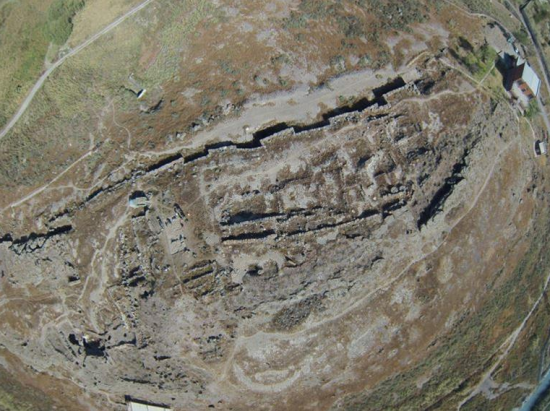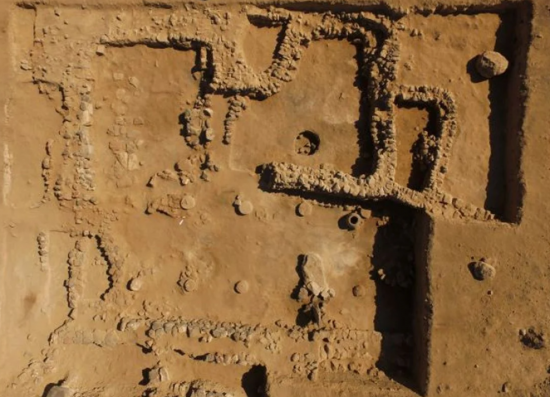PAP - Science and Scholarship in Poland, Szymon Zdziebłowski
Source - http://www.naukawpolsce.pap.pl/en/news/news,399394,the-first-polish-excavations-in-armenia.html

General view of the archaeological site. Photo by M. Truszkowski
Archaeologists from the Institute of Archaeology, University of Warsaw, began excavations in Metsamor, one of the most famous archaeological sites near Yerevan, told PAP Krzysztof Jakubiak, the project leader.
Last season, the archaeologists opened two trenches, where the work will be continued this year. The first one at the citadel, where they captured part of the street, which was the central artery of the fortified stronghold. The exposed layers have been dated to the period from Middle to Late Bronze Age. In later times, this street had ceased to be an important route, and the entire inner area of the citadel was rebuilt.

Fortifications in Metsamor. Photo by K. Jakubiak
"Most likely, this process can be associated with the conquest of the Aras valley by the dynamically expanding the kingdom of Urartu - Ancient state stretching from the present day Iran through Armenia to Turkey. Only further work can confirm this theory" - explained Dr. Jakubiak.
The second trench is located in the lower city where archaeologists have discovered fragments of buildings. The purpose of the works was to explore the urban area adjacent to the citadel.
"Most likely, after the fall of Urartu the lower town was abandoned, as evidenced by a burial we found in the ruins of abandoned houses, dating back to the late Achaemenid era or the very beginning of the Hellenistic era" - described Dr. Jakubiak.
Excavations this season focused on the remains from the period of the Middle Bronze Age and Iron Age. Archaeologists found items supporting the use of this area in Achaemenid times (6th –4th century BC).
Metsamor is a protected archaeological site with an archaeological reserve status. Excavations are carried on site out since 1965. During its heyday, 4th to 2nd millennium BC, the settlement occupied more than 10 ha and was surrounded by Cyclopean walls. In the early Iron Age, 11th - 9th century BC) Metsamor grew to nearly 100 ha. The central part of the fortress was surrounded by temple complexes with seven shrines. At that time it was one of the most important cultural and political centres in the Aras valley. From the 8th century BC, Metsamor became part of the kingdom Uraratu - the biblical kingdoms of Ararat. The place was continuously inhabited until the 17th century.
Polish archaeologists began excavations at Metsamor under the agreement signed in the spring of 2013 by Director of the Institute of Archaeology, University of Warsaw - in consultation with the authorities of the Centre of Mediterranean Archaeology UW - with the Institute of Archaeology of the Academy of Sciences of Armenia and the Ministry of Culture of Armenia. The first season took place in September and early October 2013. Another is planned for September 2014.